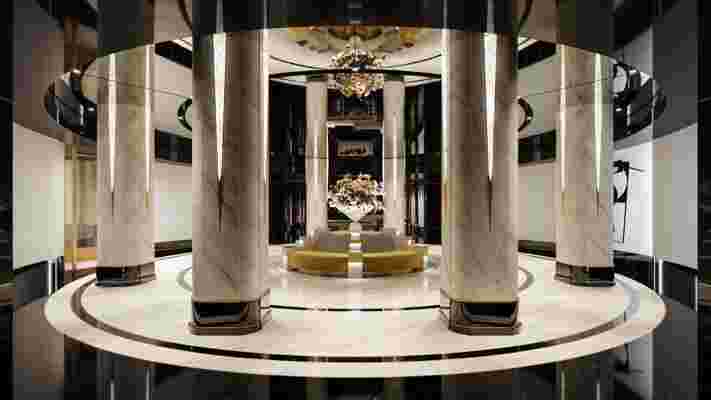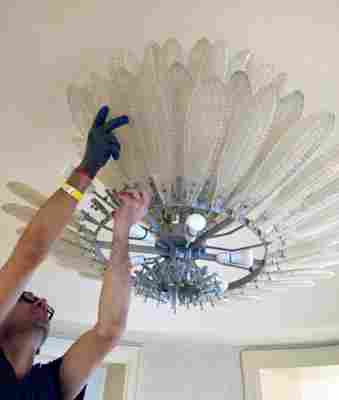November 20,2022
A Fascinating Look at the Waldorf Astoria’s Destruction and Rebirth
by David Stewart
The legendary Waldorf Astoria New York Hotel opened its Art Deco doors to Park Avenue in 1931 and has played host to every U.S. president from Herbert Hoover to Barack Obama, world leaders such as Queen Elizabeth II and Emperor Hirohito, famous celebrities such as Frank Sinatra and Angelina Jolie, and foreign dignitaries including the Duke and Duchess of Windsor as well as Winston Churchill.
At the ripe old age of 90, like many an aging beauty, it was decided that it was time for some cosmetic surgery. In fact, it was probably the most expensive facelift in New York history. But before reconstructive surgery took place, the grand dame had some preliminary work done.
With the Waldorf Astoria closed in 2017 for a multiyear renovation, the New York Landmarks Preservation Commission voted to protect several of its public spaces as being prominent and culturally significant. It had been an official exterior landmark since 1993.

The building is 625 feet tall, making it among the tallest hotels in New York City.
Prior to the restoration, a dedicated team of preservationists carefully evaluated the building’s contents, identifying thousands of historical artifacts which were preserved by the building’s developer/owner. Other items have found their way into private collections of Waldorf Astoria aficionados, gallerists, and antique dealers.
“Prior to the renovation, we were called in to remove, artfully and skillfully, some of the Waldorf Astoria’s interior decor,” says Kevin Browne, project manager, Olde Good Things , the nation’s leading architectural salvage company. The company had extricated treasures from other New York City landmarks, including the Plaza Hotel, the Flatiron Building, the Museum of Modern Art, Alice Tully Hall at Lincoln Center, JFK Airport–American Airlines Terminal, and the former headquarters of The New York Times.

Inside of the new hotel lobby.
Unlike demolition, architectural deconstruction requires finesse instead of sheer force. Reusable items can lose their value if they are damaged during the salvage process. To recover the hotel’s more than 250 marble mantels, some with French gilded overmantel mirrors, for example, workers had to cut fasteners in the wall, extricate the mantels, and store them safely on site until they were transported to a warehouse or retail operation. A lot of skill, as well, went into the removal of approximately 2,000 lighting fixtures including several large crystal and bronze chandeliers as well as a four-foot Barovier & Toso Murano glass flush-mount fixture with sconces.

One of the architecturologists from Olde Good Things shown at the Waldorf Astoria Hotel deconstructing a Venetian hand blown glass four foot wide flush mount lighting fixture.
“One of our most significant and delicate deconstructions was of the Winston Churchill Suite. It contained four walls of knotty pine paneling with an intricately carved wooden fireplace mantel,” notes Browne. To enhance its beauty and yet remain aligned to its storied past, the iconic Waldorf Astoria is being artfully restored to its original Art Deco grandeur. The 1.65-million-square-foot, full-block Waldorf Astoria New York is currently in the midst of a full restoration to reopen as a 375-room luxury hotel and as 375 condominium residences, undertaken with great care by world-renowned architecture firm Skidmore, Owings & Merrill.
A peek inside the newly introduced residences known as the Towers of the Waldorf Astoria.
“Our goal for this project is to restore the Waldorf Astoria’s sense of splendor, to retake its position as the crown jewel of New York City hotels. We are working to restore the building to be much closer to the original design created by Schultze & Weaver more than 90 years ago, while also making it relevant and responsive to contemporary needs of guests, residents, and visitors alike,” says Frank Mahan, associate director at SOM.
The newly introduced residences known as the Towers of the Waldorf Astoria offer the first-ever opportunity to own a home in one of the most coveted addresses in the world. Residents of the Towers will enjoy exclusive private amenities, along with access to best-in-class services found only at the iconic, original Waldorf Astoria hotel.
The newly renovated swimming pool inside the hotel.
The sophisticated residences, ranging from gracious studios to lavish penthouses, designed by internationally renowned AD100 designer Jean-Louis Deniot , create a truly modern experience within the building’s historic framework
“The history of the Waldorf Astoria is the history of New York City,” says Andrew Miller, CEO of Dajia U.S., the owner and developer of the building. “We have embraced a profound responsibility as the stewards of the Waldorf Astoria’s heritage, taking great care to restore the building to its 1931 opulence. The Waldorf has a special place in the hearts of people across the globe.”






